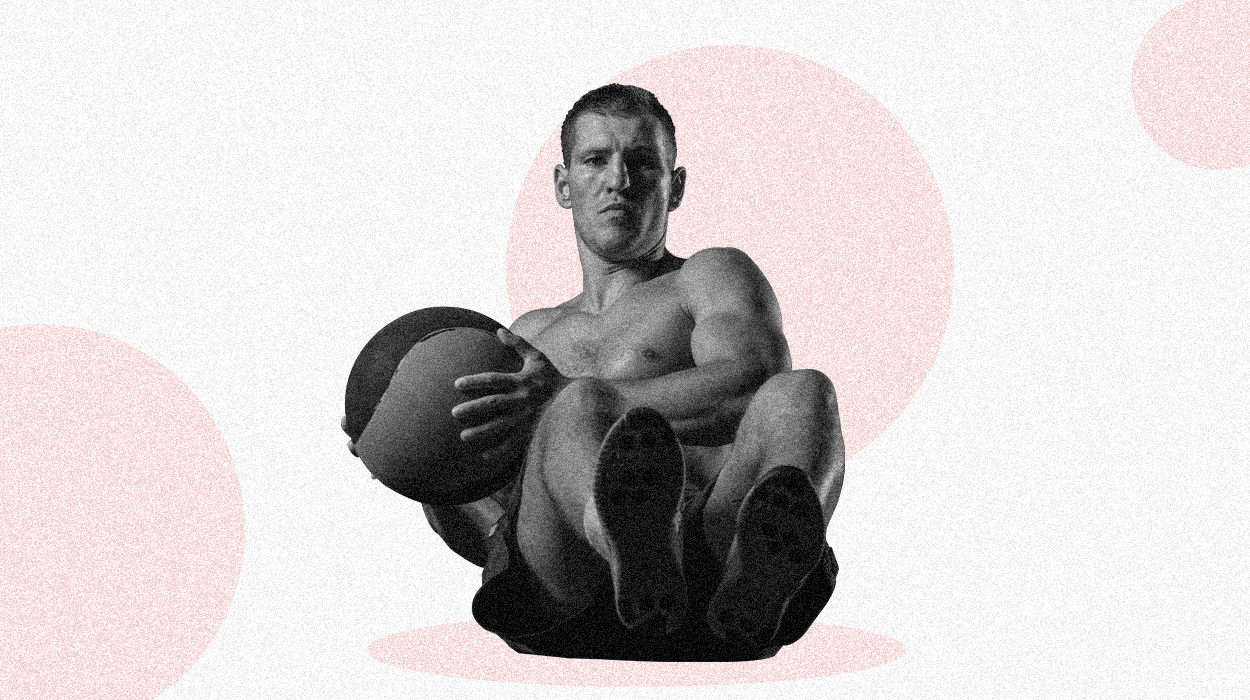
People lift weights to strengthen daily, using the progressive overload concept in a resistance training program. According to this theory, progressively increasing the stress on the body during exercise encourages muscular growth and strength gain. So, can you make the same claim to build weighted ab workouts and a stronger core?
Yes, you can!
And, if using weights doesn’t expedite your goals, you can always add weight loss supplements and fat burners to help you do the job!
Best Weighted Ab Exercises To Try
Here are the ten best-weighted ab workouts to try:
Best Weighted Ab Workouts For A Strong Core
Here is where you get the best-weighted ab workouts for your weighted ab training program. Here we highlight the exercise, the muscles it focuses on, and the proper form.
Weighted Russian Twists
These target oblique muscles and improve rotational core strength.
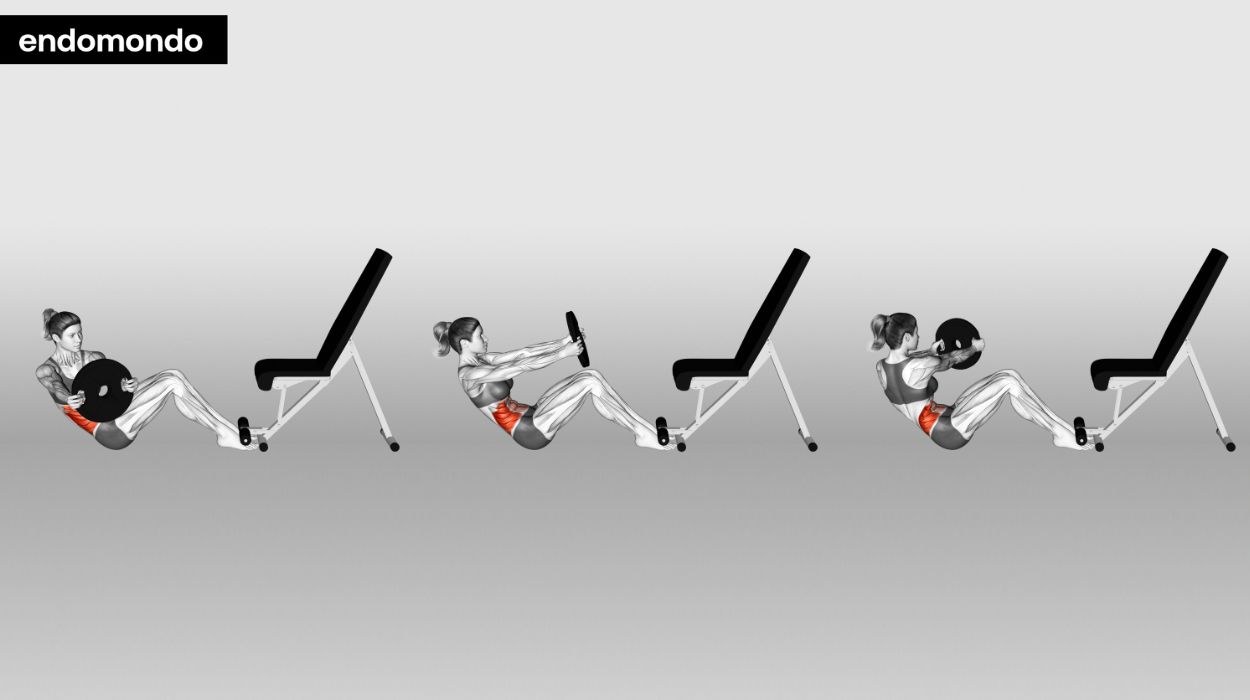
How to do:
- Hold a weight plate or medicine ball (about five to six pounds) seated on the floor with knees bent.
- Lean back slightly, lift your feet off the ground, and twist your torso from side to side, tapping the weight on the floor on each side.
- Exhale as you twist; inhale as you return.
Tips:
- Keep your back straight and engage your core for stability throughout the movement.
- Twist from your waist, rotating your torso to each side while maintaining balance.
- Start with a manageable weight and gradually increase it as your strength improves.
Optimal Sets and Reps: 3 sets of 12-15 reps.
Weighted Bicycle Crunches
This ab workout hits the rectus abdominis and oblique muscles, promoting muscle definition.
How to do:
- On an exercise mat, lie on your back, knees bent, and hold a weight plate or dumbbell on your chest.
- Alternate bringing your left elbow and right knee towards each other while extending the other leg as if pedaling a bike.
- Repeat on the opposite side with the left knee touching the right elbow.
- Exhale as you twist; inhale as you extend.
Tips:
- Maintain a slow and controlled pace to engage your core effectively.
- Keep your elbows wide and avoid pulling on your neck during the movement.
- Start with a manageable weight, and focus on form and contraction before increasing the weight.
Optimal Sets and Reps: 3 sets of 10-12 reps.
Weighted Plank With Shoulder Taps
This one engages the entire core, including the rectus abdominis and oblique muscles.
How to do:
- Start in a high plank position with a weight plate on your back.
- While keeping your hips square, lift one hand to tap your shoulders, return to the starting position, and alternate sides.
- Exhale as you tap; inhale in the plank.
Tips:
- Maintain a stable plank position with your body straight from head to heels.
- Tap your shoulders gently and alternate sides to engage your core and shoulders effectively.
- Start with a lightweight and progress gradually to challenge your stability and strength.
Optimal Sets and Reps: 3 sets of 10 reps.
Weighted Leg Raises
This is one of the best weighted lower ab workouts focusing on the lower abs and hip flexors.
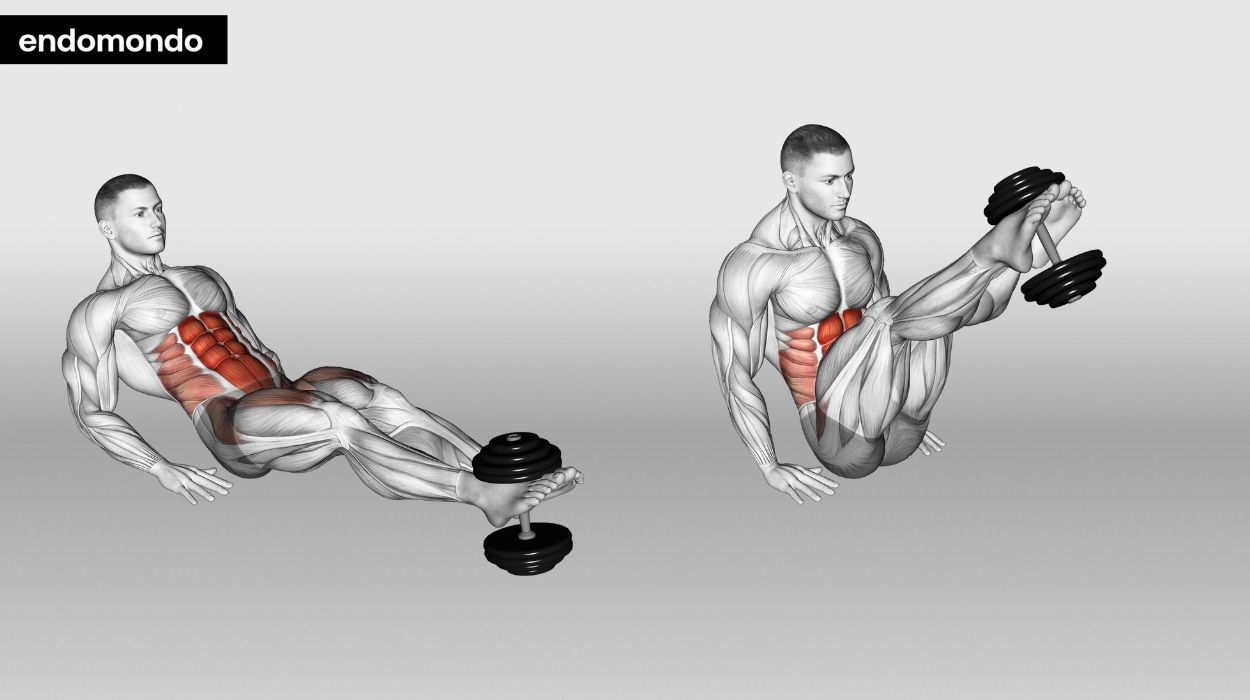
How to do:
- With a flat back and straight leg forward with your arms straight flat at your sides for support, hold a dumbbell between your feet. You can also use your body weight.
- Tilt your abdomen slightly, engaging your core muscles while lifting your legs towards the ceiling, and slowly lower them back down to your starting position.
- Exhale as you lift; inhale as you lower.
Tips:
- Use controlled movements to lift and lower your legs, engaging your lower abs.
- Keep your lower back pressed against the floor to avoid arching it during the exercise.
- If you feel discomfort in your lower back, consider using a cushion or pad under your hips for support during the exercise.
Optimal Sets and Reps: 3 sets of 10-12 reps.
Weighted Wood Chops
This exercise for abs targets the oblique muscles and improves rotational strength.
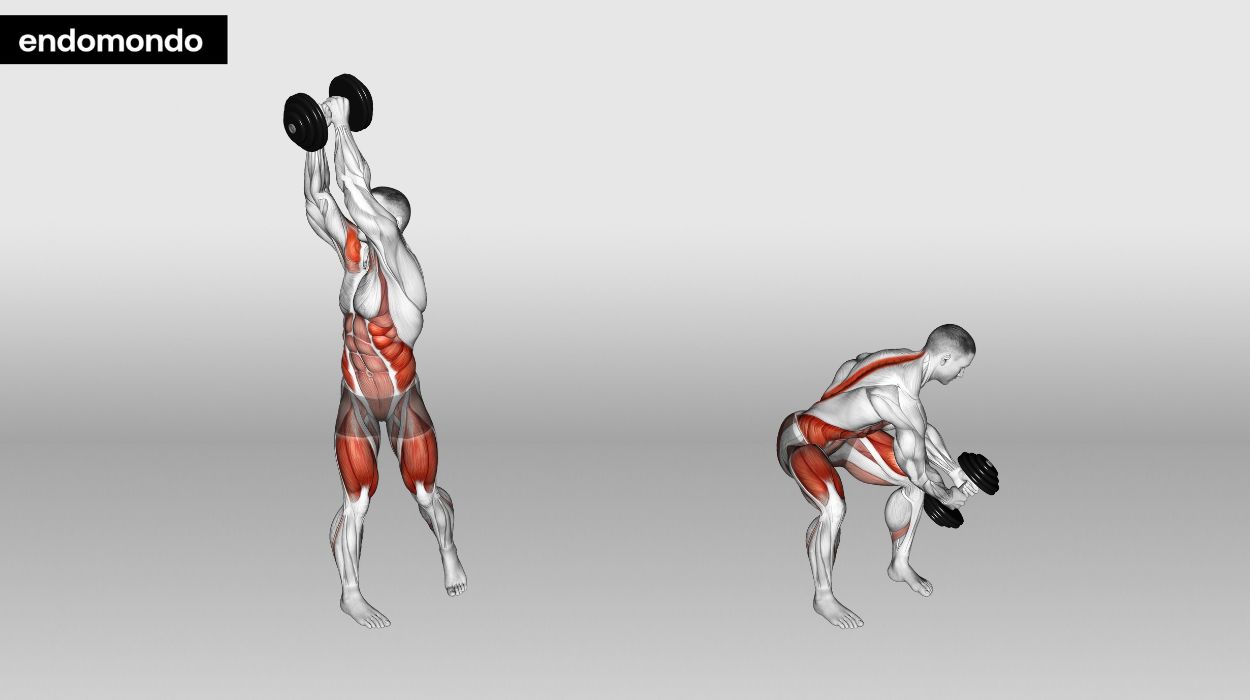
How to do:
- Start by standing with right and left foot flat, hip distance apart, and hold a weight plate, dumbbell, or kettlebell with both hands.
- Squat, rotate your torso to the left, and raise the weight diagonally across your body, raising over your left shoulder.
- Then bring the weight across your body and close to the outside of your right hip.
- Repeat 10 times, return to the starting position, and switch sides.
- Exhale as you chop; inhale as you return.
Tips:
- Keep your arms extended and your grip firm to maintain control over the weight.
- Rotate your torso smoothly, and exhale as you twist to engage your core muscles.
- Start with a manageable weight, and gradually increase it as you build strength and stability.
Optimal Sets and Reps: 3 sets of 10-12 reps.
Weighted Side Plank With Hip Dips
This side hip dip variation engages the oblique muscles and promotes stability.
How to do:
- Start in a side plank position with a weight plate on your top left side hip and your forearm resting on the floor.
- Lower your hips slowly towards the ground, then lift them back up, focusing on maintaining a straight line from head to toe. Switch sides.
- Exhale as you dip; inhale in the side plank.
Tips:
- Maintain a strong side plank position with your body in a straight line from head to heels.
- Keep your shoulder above your elbow to maintain proper alignment during the exercise.
- Avoid collapsing or sagging in the shoulder or hip.
Optimal Sets and Reps: 3 sets of 8-10 reps per side.
Weighted Sit-Ups
These sit-ups hit the entire core, including the rectus abdominis.
How to do:
- Lie on your back, slightly bend your knees, and have your feet planted.
- Then hold a weight plate or dumbbell against your chest.
- Perform sit-ups by engaging your core, curling your torso upward, and slowly lowering back down to the starting position.
- Exhale as you sit up; inhale as you lower.
Tips:
- Keep your feet anchored or under a stable surface to secure your position.
- Engage your core muscles throughout the movement for added stability.
- Maintain a slow and controlled pace, emphasizing the contraction of your abdominal muscles.
Optimal Sets and Reps: 3 sets of 12-15 reps.
Weighted Renegade Rows
This challenging exercise targets multiple muscle groups, including the lower and upper abs, back, and left arm & right arm.
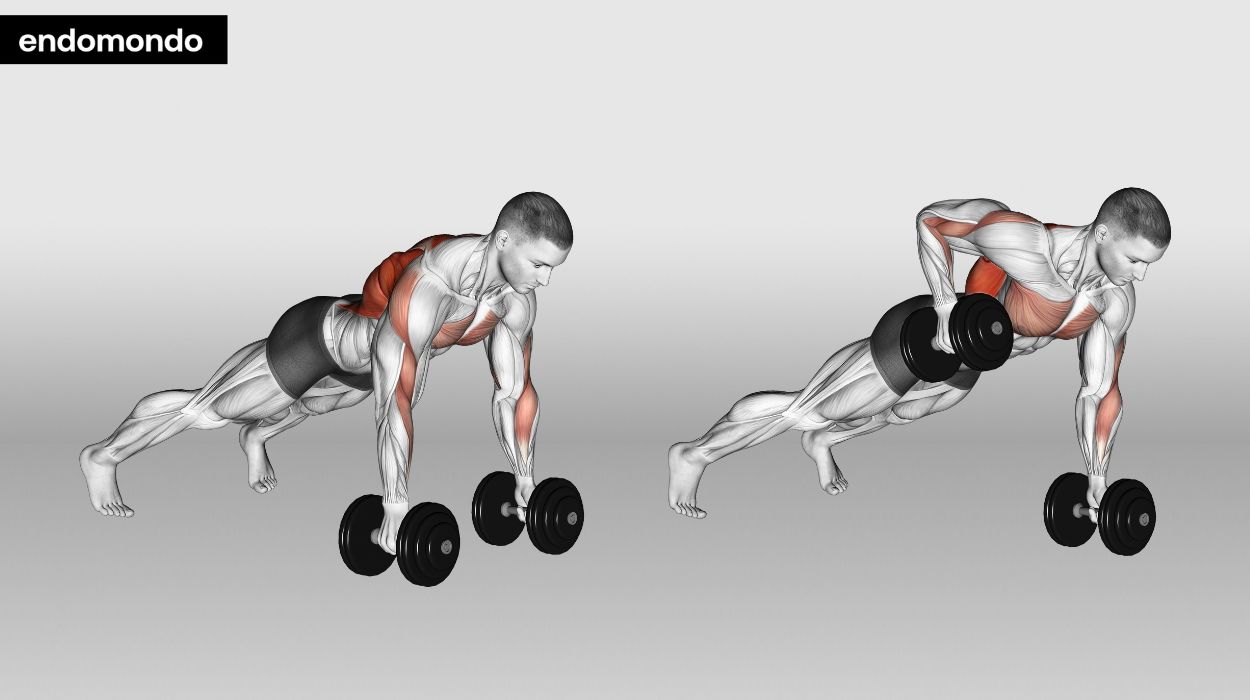
How to do:
- The starting position is a high plank position with a dumbbell in each left and right hand.
- Keeping your core engaged and hips square, lift one weight off the ground and row it towards your side while stabilizing your body with the other hand.
- Lower the weight back down and repeat on the other side.
- Focus on maintaining a neutral spine and avoiding any excessive rotation or hip sagging.
- Exhale as you row; inhale as you lower.
Tips:
- Keep your core engaged to stabilize your body while rowing the weights.
- Avoid excessive twisting of your hips and shoulders to maintain proper form.
- Ensure your wrists are neutral, not bent, to minimize stress on your joints and wrists during the exercise.
Optimal Sets and Reps: 3 sets of eight to 10 reps per side.
Weighted V-Ups
These lifts focus on the rectus abdominis and improve core strength.
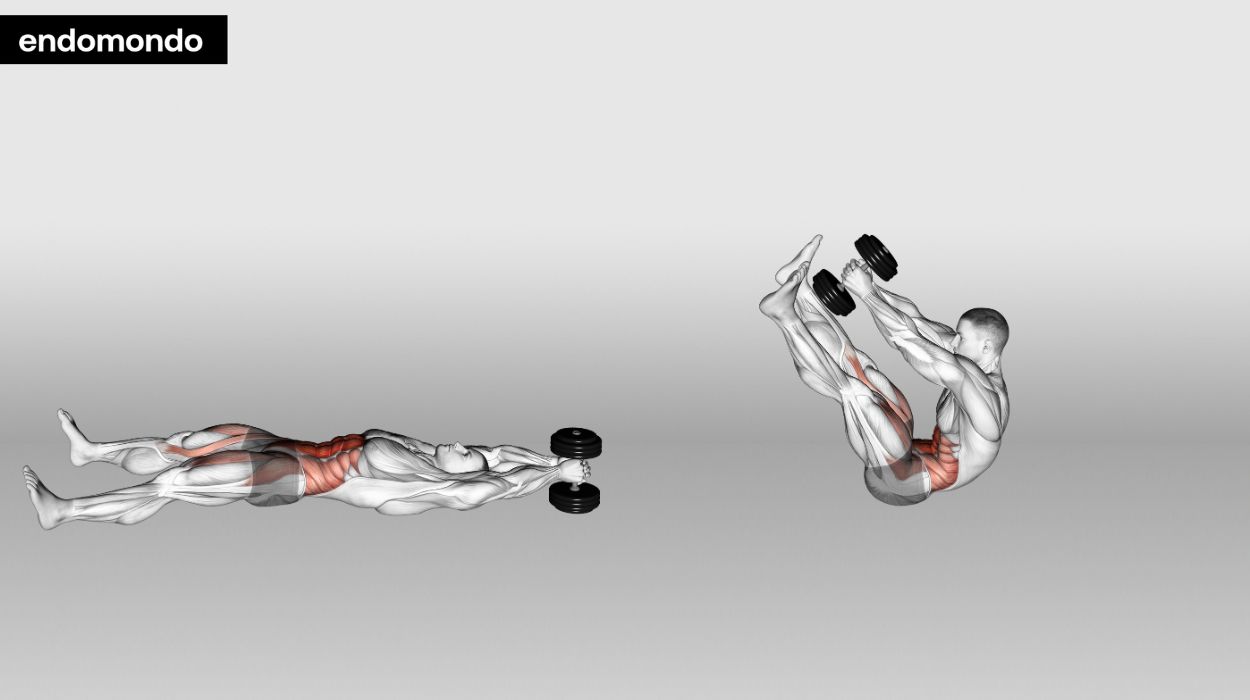
How to do:
- Lie flat on your back with your left and right leg straight.
- Hold a weight plate, medicine ball, dumbbell, or kettlebell with extended arms overhead.
- Simultaneously lift your legs and upper body, reaching towards your toes, then lower back down to your starting position.
- Exhale as you crunch; inhale as you lower
Tips:
- Ensure your lower back stays in contact with the floor or mat to minimize the risk of straining it.
- Lift your upper body and legs simultaneously to create a V shape, focusing on controlled motion.
- Start with a manageable weight and prioritize form before increasing the weight for added resistance.
Optimal Sets and Reps: 3 sets of 10-12 reps.
Weighted Reverse Crunches
These target the lower abs and hip flexors.
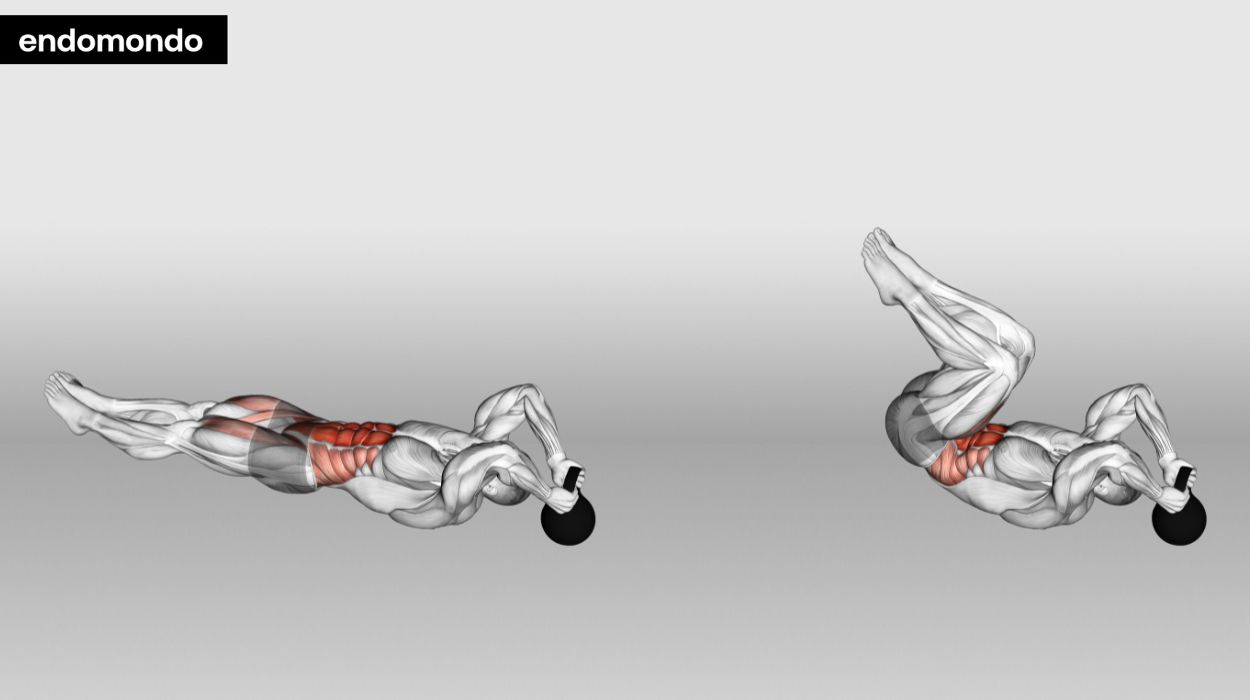
How to do:
- Lie on your back, shoulder blades engaged with your right and left leg bent, arms flat at your side, palms down for stability.
- Grab a weight plate or one dumbbell between your feet, contract your core, and lift your hips off the ground.
- Bring your knees towards your chest, then lower back down.
- Exhale as you curl. Inhale as you lower.
Tips:
- Focus on lifting your hips off the ground by contracting your lower abs, rather than relying solely on your legs.
- Use a controlled and deliberate movement to emphasize the contraction of your lower abdominal muscles.
- Place the weight between your feet to add resistance and target the lower abs more effectively.
Optimal Sets and Reps: 3 sets of 10-12 reps.
You can also utilize bodyweight ab exercises variations of the above. Always use proper form to avoid injury, starting with lighter weights and fewer sets.
Do not forget to breathe. Generally, you inhale upon exertion and exhale as you return to the starting position. Many beginners tend to hold their breath upon exertion, which causes lactic acid to build up and cramps to form.
Does Weighted Ab Workout Work?
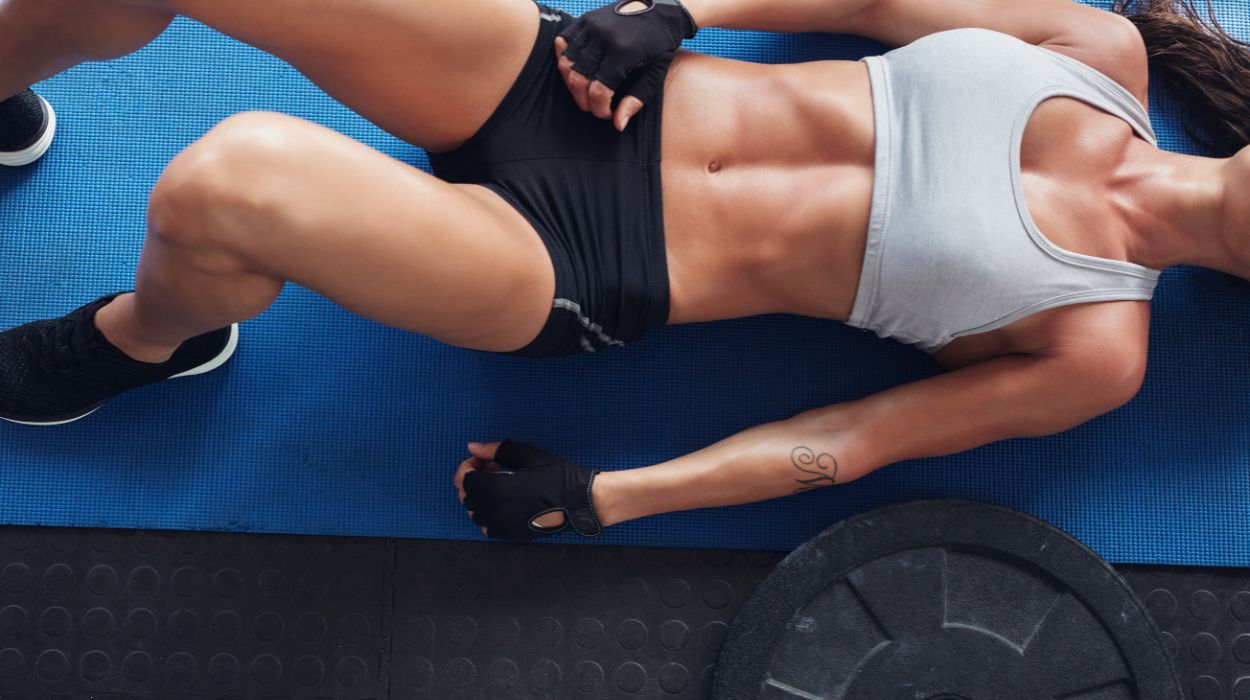
Ab workouts with weights are an integral part of resistance training programs. Resistance training[1] is a set of exercises that utilizes external resistance. The external stimuli can come from weights or resistance bands. The main goal of resistance training is muscle hypertrophy,[2] which also means mass or muscle growth.
So, do the best ab exercises work? The answer is a resounding yes!
Incorporating weights into your ab exercises can yield impressive results for strength training and defining your core. They help increase muscle fiber size within your abdominal muscles to promote muscle growth. Core strength training improves your abs’ strength and stability[3] and may help reduce chronic back pain.[4]
This enables you to achieve a balanced and chiseled midsection. Additionally, exercise stimulates your fat metabolism,[5] which may help you lose weight. When you are consistent with weighted ab workouts, you may finally achieve weight loss plus get the coveted six-pack abs.
Weighted Core Exercises: Safety Tips
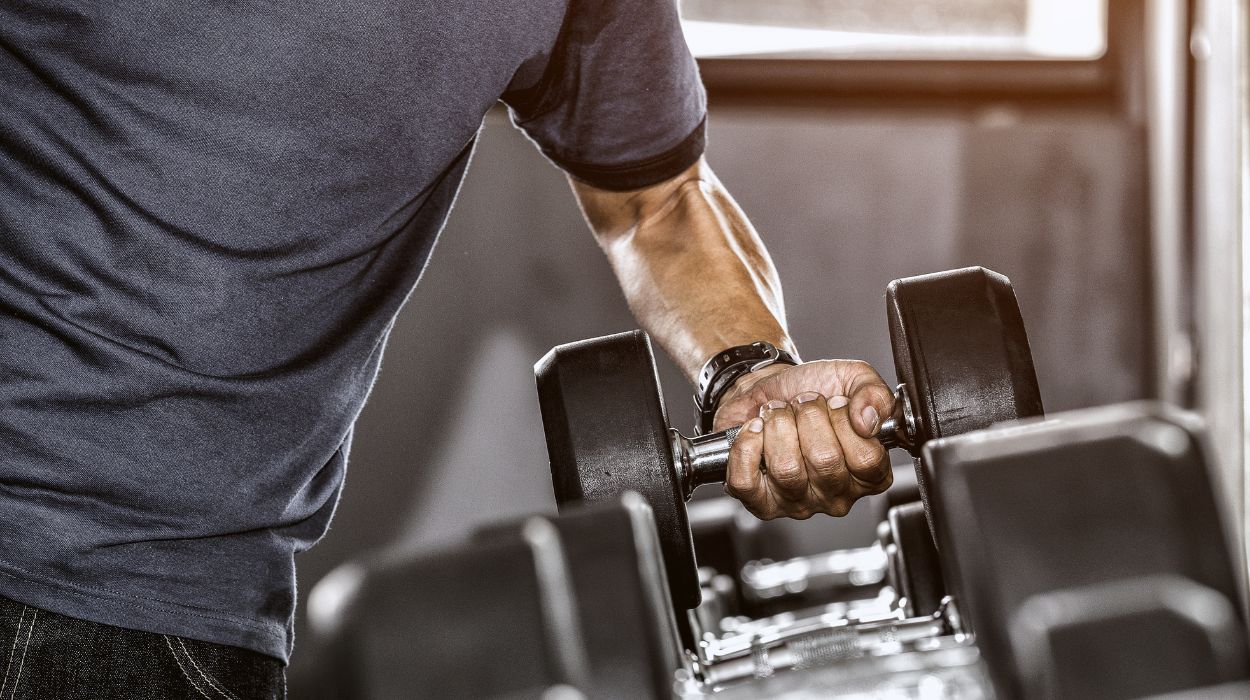
The first rule of using any weight at the gym or home is to be safe. Here are some key ways to do so:
Equipment Quality
Ensure that your equipment for weighted core exercises is in good condition and properly maintained. Before each session, check for any signs of wear and tear, loose parts, or damage to prevent accidents.
Proper Form
Focus on maintaining proper form throughout the exercises to avoid unnecessary strain or injury. Engage your core muscles, keep your back straight, and avoid excessive twisting or jerking motions.
Injury Avoidance
Start with lighter weights and gradually increase the intensity with extra weight. If you experience pain or discomfort, stop the exercise and seek medical advice if necessary.
Health Concerns
If you have any underlying health conditions consult with your healthcare provider before incorporating weighted ab workouts into your routine. This is especially important if you have back problems, hernias, or cardiovascular issues.
You also need guidance if you are on any vitamin or mineral supplements for muscle building. A registered dietitian specializing in sports nutrition can provide personalized recommendations based on your situation.
Warm-Up And Cool-Down
Before starting your weighted ab workout, warm up your body with dynamic stretches or light cardio. This is to increase blood flow and prepare the muscles for exercise. Afterward, perform static stretches and a cool-down to gradually lower your heart rate and promote muscle recovery.
The Bottom Line
Incorporating the best-weighted abs exercises into your fitness routine can lead to transformative results for your core.
The wide range of exercises and techniques presented in this guide offers something for everyone. But remember to prioritize safety, maintain proper form, breathe deeply, and gradually increase the intensity as your strength improves.
Also, maintain a healthy diet with muscle-building foods and, if necessary, use supplements. With dedication and consistency, these powerful weighted ab workouts can unlock the full potential of your core. They can help you lose weight and achieve a more muscular, chiseled physique and newfound confidence in your fitness journey.
Frequently Asked Questions
Weighted ab workouts target the core muscles and incorporate weights or resistance to increase the intensity and enhance strength and muscle definition.
No, give your muscles time to recover. Aim for two to three sessions per week, allowing rest days in between.
Weighted ab workouts contribute to overall fat burning, but evidence on targeted fat loss is limited. Combining them with a balanced diet and regular cardio can help reduce belly fat.
Weighted Russian twists, weighted sit-ups, weighted wood chops, weighted leg raises, and weighted bicycle crunches are among the practical ab exercises using weights.
Resources
- Krzysztofik, M., Wilk, M., Grzegorz Wojdala and Artur Gołaś (2019). Maximizing Muscle Hypertrophy: A Systematic Review of Advanced Resistance Training Techniques and Methods. [online] 16(24), pp.4897–4897. doi:https://doi.org/10.3390/ijerph16244897.
- Angelika Christina Paul and Rosenthal, N. (2002). Different modes of hypertrophy in skeletal muscle fibers. [online] 156(4), pp.751–760. doi:https://doi.org/10.1083/jcb.200105147.
- Hsu, S.-L., Oda, H., Saya Shirahata, Watanabe, M. and Sasaki, M. (2018). Effects of core strength training on core stability. [online] 30(8), pp.1014–1018. doi:https://doi.org/10.1589/jpts.30.1014.
- Chang, W.-D., Lin, H.-Y. and Lai, P.-T. (2015). Core strength training for patients with chronic low back pain. [online] 27(3), pp.619–622. doi:https://doi.org/10.1589/jpts.27.619.
- Honkala, S.M., Piryanka Motiani, Riikka Kivelä, Karthik Amudhala Hemanthakumar, Tolvanen, E., Motiani, K.K., Jari-Joonas Eskelinen, Virtanen, K.A., Kemppainen, J., Heiskanen, M.A., Eliisa Löyttyniemi, Pirjo Nuutila, Kalliokoski, K.K. and Hannukainen, J.C. (2020). Exercise training improves adipose tissue metabolism and vasculature regardless of baseline glucose tolerance and sex. BMJ Open Diabetes Research & Care, [online] 8(1), pp.e000830–e000830. doi:https://doi.org/10.1136/bmjdrc-2019-000830.




